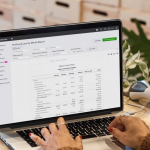Understanding Solvency Ratios vs Liquidity Ratios for Your Startup Business
As every startup business grows, its revenue, profits, and liabilities fluctuate as well. And with technology, engineering, product development, office space, and recruiting top talent, founders require a financial measurement to show how they deploy capital responsibility in order to achieve certain financial growth milestones to investors — especially at later stages. Along with other financial reporting, this can require CEOs to work with their finance teams to understand and optimize their liquidity ratios.
Solvency (or being solvent) is an important financial metric for businesses of any size. Learn what solvency is, how it differs from liquidity, and why both are important for your business.
Solvency, like liquidity, analyzes a company’s ability to pay or meet its debt obligations, although solvency concentrates on the ability to meet long-term obligations, while liquidity focuses on the ability to pay short-term obligations. An article in the Motley Fool states that “measured by ratios, financial solvency is important for the long-term survival of any business.”
An accounting firm Indinero wrote about this topic and it points out that in finance analysts use a variety of solvency ratios to examine the health of a company, the simplest of which is assets vs liabilities. An insolvent company has more liabilities than assets, and vice versa.”
Startup founders and small business owners are often focused on the day-to-day of managing their business. However, creditors and investors use solvency ratios to evaluate the long-term viability of a company, which is vital for business owners to be aware of.
What is the Difference between Solvency VS Liquidity?
Sometimes people confuse the term liquidity with solvency, but they are different financial terms focused on different aspects of measuring a company’s financial health. Meaning:
- Solvency – examines long-term (typically a year or more) to determine whether your business is in a position to meet all of its long-term obligations well into the future to continue operating
- Liquidity – focuses on the near-term (usually less than a year) determining whether your business can pay its short-term liabilities on time, having the capability to sell assets quickly to raise cash
- It’s worth noting that liquidity and solvency are not mutually exclusive; a company that is liquid may not be solvent (and the reverse is true as well)
The Indinero article points out that a business could have high liquidity and a sufficient amount of cash on hand to pay its bills, but due to long-term debts, may not be solvent. Conversely, a business can survive being insolvent for a time, but cannot survive being illiquid.
While taking on debt or loan obligations is part of doing business, as a business owner, you’re also tasked with walking the line between giving your business a financial boost and assuming too much debt too quickly, which can lead to a drop in your credit rating or even bankruptcy. A company is considered solvent if it has more assets and cash flow than overall debt.
Here are some common assets and liabilities used to evaluate liquidity and solvency.
| Short Term (Liquidity) | Long Term (Solvency) | ||
| Assets | Liabilities | Assets | Liabilities |
| Inventory | Wages | Property | Bonds |
| Accounts receivable | Interest payments | Natural Resources (i.e. coal or metals) | Mortgages |
| Cash | Dividends | Goodwill (i.e. a brand or reputation) |
Bank loans |
| Prepaid expenses | Rent | Intangibles (i.e. patents or copyrights) | Pensions |
Solvency Ratios For Your Company
It’s crucial that businesses of any size remain solvent, which means that you’re able to meet your long-term debt obligations. But how solvent is your business you may be wondering?
Luckily, you don’t have to be a financial wizard to calculate the solvency of your business using a few simple ratios. The outputs of using these ratios can provide business owners with information such as the ability of your company to meet its future debt obligations as well as the possibility for long-term growth.
There are several ratios that can be performed to determine the solvency of your business. These ratios include the following:
Debt-to-asset ratio: The debt-to-asset ratio is probably the first ratio you should calculate, The debt-to-asset ratio measures the current amount of company assets that are funded by liabilities. The formula for the debt-to-asset ratio is:
Total Liabilities ÷ Total Assets = Debt-to-Asset Ratio
A good debt-to-asset ratio is 40% or lower, which is a direct indicator of your company’s ability to meet its financial obligations, while a ratio higher than 50% is considered higher risk.
Debt-to-equity ratio: The debt-to-equity ratio measures the amount of debt versus the amount of equity that your business uses to finance daily operations. The formula for calculating the debt-to-equity ratio is:
Long Term Debt ÷ Shareholder’s Equity = Debt-to-Equity
A good debt-to-equity ratio is less than 1, which makes your business a more attractive investment.
Companies that currently have a debt-to-equity ratio greater than 1 are considered leveraged, which is when they become a solvency risk as well as an investment risk.
Equity ratio: An equity ratio is designed to measure company leverage by determining how well a company manages debts and funds assets. The formula for calculating the equity ratio is:
Total Equity ÷ Total Assets = Equity
The higher the equity ratio value, the less leveraged a business is considered. Companies with an equity ratio lower than 0.5 are considered leveraged, which means that they finance more assets using debt than equity. Those with a higher equity ratio fund more assets using equity.
When calculating any financial ratios, it’s important to do so on a regular basis, which will enable you to spot potential trouble areas before they become a threat to your business.
If you’re comparing solvency ratio results with other businesses, be sure that you choose businesses within your industry, as results vary widely between industries.
How Do Investors and Creditors Use Solvency Ratios
When you apply for a car loan, a mortgage, or rent an apartment, the evaluation process is similar to how investors evaluate companies. Based on your income and debts the bank will examine your debt-to-income ratio and, in combination with your credit score and other available information, decided if you were creditworthy or not.
The Indinero article mentions that In regard to businesses and solvency ratios, the process goes a little deeper. A single ratio measured at a single point in time isn’t particularly useful. Instead, investors and creditors gather many ratios and use them to answer the following questions:
- Is the company on par with industry peers?
- Is the company’s financial trend going up or down?
How Business Owners Can Use Solvency Ratios
Solvency ratios can be used to pitch outside investment, but it’s sometimes a delicate game. While you don’t want to mislead people about the state of your business you also want to learn how to use data to tell your company’s story.
For instance:
- You should be highlighting what’s going well while acknowledging and reframing shortcomings as opportunities.
- Do you have plenty of debt but no trouble making interest payments? This indicates you’re managing cash flow wisely.
- Are your ratios above industry norms, but trending positively, then be sure to point that out.
Liquidity Ratios for Your Company
Unlike a solvency ratio, the liquidity ratio measures a startup’s ability to pay immediate and short-term liabilities. Liquidity is a measurement of how current assets are converted to cash, which is then used to pay immediate payments and invoices due. A startup with strong liquidity will have enough cash on hand to pay liabilities due within one year or less, with enough left over to cover unforeseen or urgent needs.
There are a couple of ways startups can determine their current liquidity ratio.
Current Ratio: measures a company’s ability to pay off its current liabilities (payable within one year) with its current assets such as cash, accounts receivable, and inventories. The higher the ratio, the better the company’s liquidity position. The result is a quick comparison of how much money is available for immediate usage.
Current ratio = Current assets / Current liabilities
Quick Ratio: measures a company’s ability to meet its short-term obligations with its most liquid assets and therefore excludes inventories from its current assets. It is also known as the “acid-test ratio.” For startups that sell physical products, this can be the preferred way to understand liquidity against potential sales ready to be fulfilled.
Quick ratio = (Current assets – Inventories) / Current liabilities
Quick ratio = (Cash and equivalents + Marketable securities + Accounts receivable) / Current liabilities
Daily Sales Outstanding: refers to the average number of days it takes a company to collect payment after it makes a sale. A higher DSO means that a company is taking unduly long to collect payment and is tying up capital in receivables. DSOs are generally calculated quarterly or annually.
Days sales outstanding (DSO) = (Accounts receivable / Total credit sales) x Number of days in sales
How Investors Use Liquidity Ratios
An article in AirCFO mentions that for startups who are looking to join a venture capital portfolio, the liquidity ratio is just one of the many important measurements they can present. As a quick overview, liquidity shows an executive team’s ability to manage their debt and liability, giving insight into how the company could grow. This becomes critical as companies progress to later-stage funding rounds, which typically include some debt.
More importantly, the liquidity ratio demonstrates how viable a business is in its industry. Combined with other measurements, liquidity ratios can show that a startup is healthy, has a sound growth strategy, and can expand into a much bigger business with additional capital.
Your liquidity ratio can also be an analysis of how responsible your business is with day-to-day finances. To attract the best investors and mentors, startups should strive to have a liquidity ratio between 1.5 and 2 to 1. This tells interested investors that you have at least 50 percent more cash on hand than the startup’s current liability load.
This measurement can demonstrate to outside parties that your business is responsible with assets and is working hard to ensure long-term viability.
Conclusion
When companies issue equity or debt, their accounting needs become more complicated. Huckabee CPA’s outsourced accounting services are here to help growing businesses keep their finances in order. Establishing business credit can be helpful. If you’re a startup looking for outside investment, a outsourced CFO can help you account for and calculate your ratios. Have questions, feel free to reach out for a free consultation.












